Interview with GDT Forum Naturfotografie
Back in winter, while i was still waiting for the books to arrive, i did a big interview with Jan Zwilling for the German magazine Forum Naturfotografie. I rarely do interviews, mainly because i feel its hard to express my artistic ideas and opinions in writing. This was an exception and its an in-depth look at the book project as well a look at who i am artistically. I quite enjoyed it and i thought it might be a good idea to present it in English since its only been available in German.
The interview was published in edition 1 of Forum Naturfotografie 2021.


You grew up and still live in a part of the world that many landscape photographers consider a
dreamland, Arctic Norway. When did you first realize the visual potential in your home and what did
your first photographic attempts look like?
I feel extremely blessed living in this part of the world. Im surrounded by beautiful landscapes
everywhere. I was aware of the beauty and potential even before I picked up a camera for the first
time. I remember being a bit annoyed that the mountains I hiked around in wasn’t mentioned in
the same way as the fjord region in the south, or Lofoten here in the north. Ofcourse, im very
subjective in this. I have a deep emotional connection to these places, and im sure a lot of people
can relate to a feeling of ownership to specific areas. But seeing and feeling this beauty does not
mean its easy to transfer into a pleasing photo. This area is less instant than a lot of the iconic
places. There are no immediate compositions, no mountains jumping in your face. Its more
“hidden” and requires a bit more effort to find the good spots. And even though I knew the area
really well when I started photographing it, I still needed years and years until I got any results that
I was happy with. Looking back at my first attempts, over the first few years, I can see that it was
all a learning process. I was trying to copy my inspirations and finding places in my home area that
would resemble images that inspired me. The results was not good at all, but it was great for
learning.
A lot has changed since then, since Lofoten Islands became an A-list location for landscape
photography. How did you experience this development?
Lofoten is a place that I wasn’t very familiar with before I started my photography. Even though I
only need to drive for 2 hours to get there, it was never a place I visited and explored growing up. I
had been there many times, but only to play football. So my visual experience was through a bus
window. Watching mountains pass by.
But when I went there for the first time as a photographer, things got very interesting. This was
before everyone went there and only a few people were running tours to the area. I did a short trip
with my good friend Antony Spencer, where we went to Reine and Skagsanden Beach in stunning
winter conditions and I remember we were all alone out there. There was no other people! And it
stayed quiet like that for a few years. I did my first tour with clients out there in early 2014, and it
was still very quiet. Hardly anyone around. But over the next 3-4 years I could literally see things
change in front of my eyes. It became difficult to visit the famous locations without sharing it with
numerous other groups. The experience wasn’t the same anymore, but by going to lesser known
places we were able to shy away from the crowds to some extent.
The great thing about Lofoten is that the area controls itself in a way. The infrastructure isn’t set
up to handle more people than what is already there. There are no big hotels that can
accommodate hundreds of people, luckily. And I hope it stays this way in the future, but I guess it’s
the same as anywhere else, money will decide.
You differ between the photographers’ playground which is Lofoten and Senja Islands, and your
backyard of mountains on the mainland. Is it also because you want protect your very home place to
a certain degree from becoming overrun?
From the very beginning I have treated my home area different to Lofoten and Senja and other hot
spots. I knew I had to, in order to protect the area. Even though I love bringing people into the
mountains and showing them the incredible beauty and atmosphere that lies beyond the easy
accessible spots. Once every summer I bring a small group into the mountains where we hike
through the whole area over a week. Its my favourite trip every year. Whats most incredible to the
ones who have done this trip, is that over a week we might cross paths with one or two reindeer
herders or a lonely local hiker. The solitude and feeling of wilderness is fantastic. I want to keep it
like this. It’s a fragile environment, and it needs to be protected. Thankfully, like I mentioned
earlier, its not visually obvious. On the surface there is nothing special about the area. So its not as
attractive to people driving through the surrounding areas. When people arrive at Evenes Airport,
they have no clue that when they get out of the terminal they are looking straight up at my Misty
Mountains.
Also, and maybe its more important to me than im aware of myself, the area has a great personal
value for me. It holds a lot of my soul, like a part of me permanently resides between the
mountains. So many memories from my life. And I don’t want to ruin that personal connection by
seeing hordes of people in the area.
You’re also riding the wave and offer guided tours in your home region. How do you feel with being a
part of the machinery which has ambivalent effects on the regions?
Im not only riding the wave. To some degree I feel like one of the few that put that wave into
motion. And it’s a bittersweet feeling. It has made me able to make a living of photography,
something I never even dreamt of. At the same time the effect tourism has on the fragile arctic
environment is heart breaking at times. But, I think it was inevitable. Photo tours is one thing, but
its nothing compared to the effect social media has had on incoming travel to Lofoten. The amount
of travellers going to Lofoten to get their Instagram shots is just beyond imagination. There are so
many! In part, the photo tour business showcased the spots to the public and from there it just
went crazy. Luckily a place like Lofoten will to some degree limit itself due to the lack of hotels on
the islands. There are just a few large hotels and none in the most spectacular areas. So the area
can only fit so many. I hope the local authorities wont allow huge hotels to be built in places like
Reine, that would totally destroy the area.
Did these icon-hunting and light-chasing adventures drift apart from the kind of photography your do
for yourself? Is running photo tours still about you personally photographing?
I don’t do icon-hunting myself, but I can certainly understand the value it has for the people that
travel to these remote places. I have tried so many times to steer the attention away from the
great icons and instead making people enjoy finding the more quiet and less obvious scenes. But
the majority prefers to take pictures of the famous spots. I cant remember the last time I took a
photo at the famous spots, even though I take groups to these places several times every year. Its
not about my photography, its about showing people who have never been to these places.
Showing them whats possible. I still get a lot of joy from seeing the excitement in peoples eyes
when they see these incredible places. Over the years we have also put more emphasis on the
learning aspect on our trips. We want people to have tons of fun and go home with lots of great
pictures, but also with fresh knowledge and a sense of having grown as photographers.
For me personally I have learnt to challenge myself on these trips. I try to photograph the places in
a different way. It could be that I try to do only long exposures of simple subjects, or that I shoot
with a specific focal length for the entire week. Things to keep me on my toes and push myself
while going to the same places. That way I stay inspired.
Anybody who knows you knows that you’re easily excited, both by joyful company during tours and
by the bliss of solitude while photographing. What, in the end is more truly Arild?
Solitude. I enjoy being alone in nature. Im more relaxed and focused. Im a better photographer
when im by myself. But youre right, I really enjoy the social side of the tours and I like being with
other people. I find it so interesting to talk to others, not only about photography, but about life in
general. Its one of the things I enjoy the most about running tours. Getting to know the people.
Making people happy and excited is a great thrill.
But its when im all alone that my weirdest ideas come to life and I can let my creativity run freely. I
slow down when im by myself. When im taking pictures with others im always working really fast,
sometimes too fast. Its only when im alone that im able to slow it down properly.
I have noticed that more recently your photography become more simple and subtle, deep and
thoughtful. I know you always enjoyed the reduced, almost abstract winter photography for example
by Bruce Percy. Would you say that this “style” has become your personal signature style?
I always thought my signature style was that I have no signature style. There is too much going on
and my work is all over the place. But I certainly see what you mean. Bruce Percy has been a
source of inspiration for many years and his approach definitely had an impact on my work. Him
and many others. I am truly comfortable working with simplistic compositions as my
compositional vision seems fine tuned towards those types of images. I think we as photographers
are tuned in on certain frequencies when we are out looking for compositions. We scan the scenes
differently and what triggers me might not trigger you and vice versa. In a way the term “simple”
or “simplistic” is a bit mis-leading at times, since it almost implies that these types of images are
easy to make. That they are simple. When in fact they are so difficult to master. To make them
interesting and engaging for the viewer is quite difficult. For many years I ran around with my wide
angle, creating near-far compositions with impressive foregrounds and backgrounds. Put a
waterfall in the foreground and a pointy peak in the background. These are some of the easiest
images to make.
Im not attracted to pure beauty of nature. The cliché impression of beauty in the form of nice
colours and impressive views. It doesn’t challenge me at all and I don’t feel anything when looking
at those kinds of images. Im more and more attracted to the mundane, to the unnoticed and
anonymous. Theres more complexity and interest in the less obvious.
Now im in a place where im both comfortable with how I work, but also constantly pushing myself
to think outside the box. Its so different from where I was only a few years back and couldn’t have
been happier about where I am!
You have now photographed in many places all around the world, but still are bound closely to your
home region. When did you realize you work on a project called “Heime – Home”?
There is something about feeling connected to a place. Working in the same area for years. I enjoy
travelling, visiting an area for a week before returning back home. On these trips its all about
making the most out of the days at my disposal. No time to miss. While I mostly return with
images im happy with, its completely different when working in my home area. Here I can witness
nature around me throughout the seasons. I can go out when I know the conditions are right and
my photos are far more fine-tuned in a way. Around 10 years ago I started thinking about putting
together a book with a focus on my home mountains. I had a very long term plan for this and
didn’t expect it to materialize anytime soon. But as time passed and I built an archive of images
from all these places here at home, I realized that I had been thinking to narrow and I needed to
widen the horizon a little. There was just so much outside the pure mountain scenes, things that
screamed for attention. My life as an outdoor enthusiast has not only been focused on the
mountains. I grew up in a forest area, with lakes, rivers and huge birch forests. These more quiet
places has played a huge role in shaping me into the person I am today. And one day it suddenly
dawned on me, I need to make this project about all of this. My home. That’s when the title
“Heime” fell in my head. From there everything fell naturally into place and the project picked up
speed quite quickly.
Is “Heime” more a photographic project in the sense that you conceptualize a consistent series of
photographs or is it rather a curative project, selecting and reworking images for publication?
Perhaps it’s a mix of both. I spent a long time with sequencing and page layout. A large portion of
the images I took specifically for the book and most often as a supporting act for another image. I
often show a grander scene accompanied by a smaller more intimate scene. A lot of the images in
Heime cannot stand alone. I cant post them online since they make no sense without the other
image. Alone they are too weak, but together they grow and come to life.
Setting up the storyline in the book was interesting and time consuming. I wanted to tell a story
where I take the viewer through the seasons, showing a huge variety of scenery. Making this
harmonious and avoiding making a chaotic mess was hard. Im not sure I succeeded 100%, but i`ll
let others decide on that.
Home has a very personal connotation, implying it is as much about you as it is about a place. In
which way are the photographs subjective and personal?
I have given this a lot of thought lately. All the images mean a lot to me. I connect deeply with each
of them. But the challenge is to pass this on to the readers. All the images I captured because they
mean something to me for all kinds of reasons. There is an image showing nothing but a gentle
wind blowing on a lake. It’s about as anonymous as it gets. Yet I feel deeply connected to it. I have
spent more hours than I can remember just looking at wind on a lake. As you probably know I am a
passionate sportsfisherman, and I spend a lot of time out in the mountains fishing for trout. Often I
can sit overlooking a lake studying wind patterns and looking for fish. It’s a very zen-like
experience for me. When I look at that particular image in the book, I am instantly taken back to
that feeling. A feeling of calm and being in balance. Im sure very few will feel the same when they
look at it.
A lot of the images are the same, although not to that same degree of subjectiveness. They are
connected to parts of my brain and memories that the readers might not relate to. Or they might
relate to them in totally different ways and perhaps link them to something in their own memories
or emotional library. That’s the beauty of photographs. If I can make the readers go on a journey
while looking through my book, to feel something, an atmosphere, something that makes them
feel and dream themselves away. Then I have succeeded.
I also hope that the book will challenge people a bit. The worst response I can get is “wow, these
are pretty photos”. I much rather hope someone will say “this is total nonsense and I don’t
understand.”
Much of today’s photography ridicules notions of personal connection to the subject or deeper
meaning, because it is short-lived in digital files and social media hypes. Why it is important to you
that “Heime” is a book?
I think it’s a shame that almost all photographs are doomed to live a life where they get attention
for 1 second while being scrolled by on a small phone screen. I see all these amazing photographs
every day and I wonder what happens to them. Most are just buried in a social media feed never
to be appreciated properly in a print. To me, a book is the ultimate way of viewing a
photographers work. I have a nice collection of photo books and there is nothing quite as
inspirational as sitting down with a glass of red while looking through an amazing photo book.
And it was important for me to present this project in the best possible way. I could do that in a
gallery on my website, but that didn’t feel right at all. I want the viewer to take his time to really
take in the work properly, and by doing this in a book, with careful sequencing, I could really
present it exactly how I wanted.
A large portion of my work is subtle. Social media is a disaster for subtle photography. Instagram
and Facebook is great for the fantastical landscapes with impressive elements. The ones that
succeeds the most on these platforms have very instant photographs with hardly any subtlety.
Books and prints is a different game and it’s the right way to absorb and “get lost” in subtle
photography.
One advantage of a book is that it forces to perceive a body of work as exactly this, a body of work as
opposed to single photographs back to back. How important was it for you not to select the very best
individual photographs but those that harmonize best?
The importance of balance and harmony in the image selection is very underrated. I had some
photographs that I loved, but I couldn’t make them work within the book. They felt “off” and
misplaced. Deciding to leave them out was tough, but necessary. I think it is easy and tempting,
when working on a book, to think that only the best photographs should be presented. Putting
together a “best-of collection” where you only choose to showcase the perfect photos. In my
opinion its far from the best solution. Each spread should tell a story and harmonize. That was an
eye-opening experience throughout the project. There are 248 pages in the book, it takes a long
time for the reader to look through it all. It’s not a 15 minute experience, but rather something to
be absorbed over several sessions. When looking through a large amount of photographs, the
importance of having some photographs that allows your eyes to rest, even including numerous
blank pages, cannot be underestimated.
You worked on the book during much of the pandemic, which seems to have been an intense,
inspired and productive time for you. You refer to the result as “100% me”. Can you describe how
you worked on all aspects of the book, and how working on the layout for example interacted with
still photographing for the book?
When the project really came to life and I started working on the layout and storyline of the book,
the whole thing was like a living breathing creature. I would stay up in the evenings and well into
the night, working on selecting images and sequencing them into the book. How large should this
one be? Does it work with this one? Does it fit after these ones? And quite often I understood that
I needed a specific kind of picture in order to make an already existing photograph work optimally.
So the next day I would climb up in the mountains to take that missing picture. This happened over
and over again and it was exhausting, but so rewarding and inspirational. And all of this while the
world was on pause due to the pandemic. I wouldn’t have been able to finish HEIME without the
break caused by the pandemic. Suddenly I had a calendar filled with nothing but spare time. No
workshops, no travel, just lots of time at my disposal. I did more photography in 2020 than the
previous 5 years combined. And my mind was in a creative bubble where all I could focus on was
the project. I could stay awake at night, unable to sleep, just thinking about how to get a specific
photograph.
The layout of the front page and back page was done by the skilled people at To-Foto in Harstad,
just 20 mins away from my home. They did the design of these things so I didn’t have to worry
about that. It saved me a lot of energy and worry.
It is interesting that you say that finishing the book has left you mentally exhausted and blunt. How
did this come? Are you still in love with your project?
When you work on something so intensely over a long period, all your energy and creativity put
into it, I think its impossible to not be mentally tired when its done. I remember after I sent over
the final draft, I was all empty. I knew deadline had come and all I could do had been done. I was
filled with a feeling of “what now?” What on earth should I do next? I felt no desire to go out and
take pictures. And since the project was all about the area where I live, I was scared of going
outside seeing something incredible and thinking “oh no, this should have been in the book!” I felt
like I was never going to take another picture here again. Luckily I don’t feel like this anymore and
im already looking forward to working even more in these places.
The other thing that has drained me completely over the last couple of months, is the lack of
control. When the book went into printing I had absolutely no control over the process. We had
given them prints of each image so that they knew how the photos should look. Then all I could do
was to sit and wait. The waiting is torture for me. I couldn’t sleep at night, I would stay up thinking
about all the things that could go wrong. What if the book comes and it looks terrible? What if I am
making a fool of myself? All of these worst case scenarios would constantly go through my head.
Now I have already received my advance copy of HEIME and I cant even describe the feeling of joy
and relief when I saw that everything was perfect. Holding the final product in my hands was
incredible. I have looked through it all several times and im immediately taken back to all those
moments when I pressed the shutter. It fills me with happiness and im truly proud of the result.
Looking through older photographs for the book, you said that those “feel like the work of another
person, one that I once knew but have since lost contact with”. Do you expect to feel the same in 15
years, taking “Heime” out of the shelf and thinking back of the Arild of 2020?
I think personal growth and development is very important for every artist. Im now at a place
where I am truly happy with where I am artistically. But I really hope im not in the same place in 15
years. Acknowledging and embracing where we have been is important, just as it is important to
seek new challenges and go in new directions in order to develop. Looking back at my work up
until only a few years back, I can clearly see an immature photographer trying hard to be someone
he wasn’t supposed to be. Trying to create photos with the purpose of impressing others instead of
listening to myself and what I found pleasing. When I finally broke out of that cycle I felt almost
reborn and recharged. I know my future work will have one thing in common, it will be personal
and hopefully visually challenging. I will try continue to develop and seek new visions, but Im also
certain that I will connect deeply with HEIME when I look back at it. After all, its 100% me.
Related Posts
December 18, 2022
5 photobooks to add to your collection!
October 11, 2021
New gallery release!
May 26, 2021
Photography Break
May 9, 2021
Behind the Shot – Girkoaivi
April 30, 2021
Heime – An Update
April 14, 2021
Behind the Shot – Mist Trees
April 11, 2021
Behind the Shot – No Scale
April 7, 2021
Book Recommendation: Arctic by Vincent Munier
April 6, 2021
Behind the Shot – Riebecohka
1 Comment
Comments are closed.



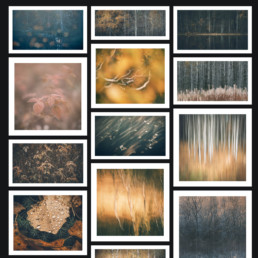
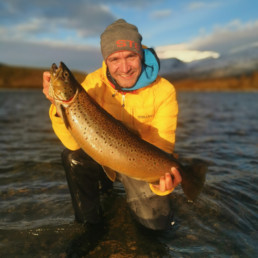
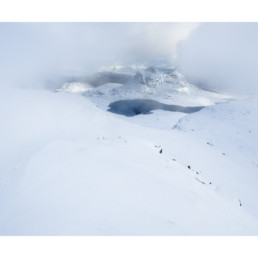

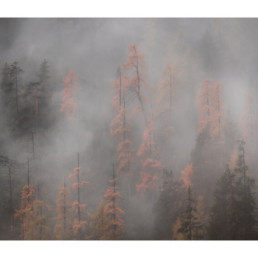
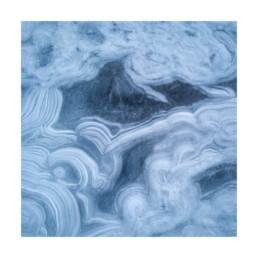

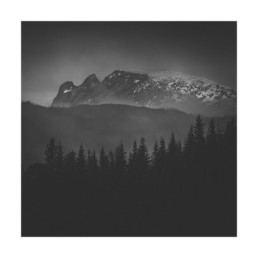
Great content! Keep up the good work!